From Ex-Cerner Guy (among the many): “Re: Banner’s Cerner pricing. The pricing for the full HIS, @ $30M or so, looks pretty accurate. It likely started in the $45-50M range, then someone from KC came in and probably cut the SW pricing to get the deal. KC types will cut the pricing until the prospect says yes. From a customer perspective, there’s no value in saying yes until the SW fee is $0 and hourly rate is $125 or less. Banner probably said yes a little early.” The paper actually said each of their smallish hospitals was spending $30 million, so that’s what I questioned. Good negotiating tips, by the way.

From Bob in Accounting: “Re: sometimes you keep track of these things.” A doctor at Fletcher Allen Health Care (VT) is reprimanded by the state medical board after admitting that he improperly accessed the medical records (presumably paper ones) of eight women, one of them a previous acquaintance who found about it and turned him in. The article refers to “breeches of patient medical record confidentiality,” which either means someone makes little pants to keep records safe or the reporter trusted his spellchecker instead of his dictionary.
From Mark Moffitt: “Re: ARRA. Is anyone else viewing the ARRA as an investment opportunity v. subsidizing IT? GSMC is spending $1.3 million to net $2.7 in Year One and using the proceeds for other non-IT clinical needs.”
From The PACS Designer: “Re: SAML. The porting of applications to the web has increased the need for security enhancement solutions. To address this need, there’s a specification called Security Assertion Markup Language (SAML). SAML provides the means for multiple organizations to exchange security information to protect each other’s security requirements. Also, security software promoting federation and the use of single sign-on solution for multiple systems through the use of SAML enhances the user experience and removes the need for multiple IDs and passwords.”
From Wayne Panera: “Re: strong passwords. Pretty good paper from Microsoft called ‘Do Strong Web Passwords Accomplish Anything?’ discussing the fallacy that strong passwords produce additional security.” Link (warning: PDF). The article says that passwords are stronger than they need to be to thwart brute force attacks (as long as you don’t allow more than three incorrect login attempts) and yet do nothing to prevent phishing and keylogging. Interesting idea: it suggests making user IDs longer is easier for users to remember and equally effective in preventing brute force guessing. Their example: PayPal requires an eight-character password that isn’t in the dictionary, uses mixed case, and has at least one special character, despite the fact that even a six-digit PIN has only a 1% probability of being cracked after a 10-year brute force attack. With regard to lockouts, the article also suggests that instead of a fixed lockout, like 24 hours, that the application simply geometrically increase the lockout time between each unsuccessful login attempt and, to prevent bot attacks, consider setting the lockout by IP address.
From Lynn Devine: “Re: Healthport. They’re looking to outsource their EMR development to integrate it with their PM product. They project a year to do this – it’s only been suggested for the past five years.” Unverified. Inga is attempting contact the company.

University of Florida says it will invest $70 million in clinical and translational research over the next 5-7 years, with “a large portion of those funds” being used to roll out Epic’s EMR to the faculty practice.
Listening: Lady Ga Ga, hopelessly trendy and way outside my usual genres, but it sounds pretty good now that I’ve listened to the CD three times.
A 50-provider medical group in California drops two CCHIT-certified (“point-and-click”) EMRs, replacing them with the EMR from SRSsoft after a free pilot.

A BlackBerry executive grudgingly admits that docs love the iPhone, confirms that the Chalk Media technology BlackBerry acquired will be used for medical education, and urges healthcare customers to take advantage of their BlackBerry Enterprise Server and client licenses to push data. He also touts BlackBerry’s App World and says customers have an appetite for it “and other app stores”. Basically, he thinks Apple is promoting innovation that BlackBerry has had in place for years. If there’s an App Store … er, App World … application to measure the sourness of grapes, it’s time to roll it out.
Thanks to the reader who sent over the BMJ article from Kaiser Permanente Hawaii on its use of HealthConnect to proactively generate risk-based nephrology referrals instead of waiting on generalists to do it. Last-minute nephrology referrals by primary care providers occurred 30-42% of the time in the pre-study population, causing missed clinical opportunities for patients. The targets and results: (a) reduce late referrals, defined as being within four months of the onset of end-stage renal disease, aka ESRD (dropped from 32% to 12%); (b) creating the “life line” arteriovenous fistula in time for it to mature (increased from 18% to 36%); and (c) start dialysis as an outpatient (increased from 35% to 56%). How they did it: HealthConnect was used to identify at-risk patients, looking at glomerular filtration rate, urinary protein, and serum creatinine lab results in a monthly download. Those patients were assigned a numerical risk rating for ESRD. HealthConnect was used to recommend the referral, capture notes about whether the PCP and patient followed through, to deliver electronic messaging between the PCPs and nephrologists, and to issue alerts for patients showing a deterioration trend from one monthly download to the next. The result was that 280 patients were referred and some of the PCPs learned how to manage the patients themselves better after electronically reviewing the work of the nephrologists. Interestingly, the original plan was to let the PCPs do all the managing themselves, but they pushed back, saying they were too busy and worried about the impending HealthConnect implementation. Good work by Kaiser, a nice example of physician collaboration, a great reminder of how medical practice can change positively once information is available electronically, and a fine service to patients who surely had better outcomes as a result.
This from Weird News Andy, who says, “They took him to get a blood test at a hospital to prove he was drunk. He proved they were right.” A DUI suspect flees Research Medical Center in a stolen ambulance before his ride is ended by “stop sticks” and a police dog’s bite. As you might expect, he was not a first-time offender, with a rap sheet that included three previous alcohol-related convictions and a revoked driver’s license.
Michael Sinno is promoted to VP/CIO of Cooper University Hospital, which is in some hitherto unknown state called South Jersey.

Thanks to IntraNexus and CEO Rick O’Pry for supporting HIStalk as a brand new Platinum Sponsor. The Virginia Beach-based company offers the Sapphire Web-based (or client-server, if you prefer that option) hospital information system (still the coolest product name ever if you ask me), a complete single-database system with patient access, document imaging, revenue cycle, scheduling, general financials, EIS, clinical care, imaging, CPOE, critical care, ED, EMR, lab, LTC (!), pharmacy, point of care, radiology, and other modules. Here’s a writeup about beta site Oswego Hospital, who said “Sapphire was the best go-live we have ever had.” They just went live at St. Luke Hospitals (KY). Thanks to IntraNexus for supporting HIStalk.
Bad news for Microsoft: a survey says that 60% of its business customers won’t buy Windows 7 because of cost and compatibility concerns (the same reasons those customers passed on Vista, in other words). Microsoft’s real problem, if you ask me (and you didn’t), is that its cash cow products aren’t strategic – everybody can live without new versions of Windows and Office. And in tough times, they apparently will.
The American Heart Association will donate $50,000 toward creation of an open source CPR learning application for the Wii.
AMDIS announces its 2009 award winners: Michael Dominguez (University San Antonio), Fallon Clinic, Cynthia Herzog (MemorialCare Orange County), Kaiser Permanente, Steve Margolis (Orlando Health), Jon Morris (Wellstar), Matt Sprunger (Dupont Hospital), and the UPMC interoperability team.

The New York Times highlights Cook Children’s Health Care System (TX), a 350-physician practice that will install a Web-based EMR from athenahealth and Microsoft’s HealthVault. It will also open an Innovation Clinic with two or three doctors that will operate under the capitation model.
Cardinal Health’s debt ratings are lowered to near junk levels because the upcoming spinoff of its clinical and technology products business means there’s not much left except low-margin drug distribution. I guess analysts weren’t distracted by the CareFusion jazz festival.
China’s health ministry puts a halt to a clinic’s rather extreme program of Internet addiction therapy in teens, saying it will no longer allow “freaky treatment” that included electroshock therapy, kneeling in front of parents, and forced confessions of wrongdoing.
While everybody’s salivating over stimulus money, here’s a sobering fact: the US budget deficit just hit $1 trillion so far this year, the first trillion-dollar deficit ever, but nothing special considering estimates are now at $2 trillion for the year (not counting the new calls for another round of stimulus money because the first one didn’t really do much, with unemployment even higher than the level threatened if the stimulus wasn’t passed).
The Terminator fires three of the six members of the California Board of Registered Nursing and its executive officer quits after a nonprofit investigative newsroom found that it took years to get dangerous RNs off the job. Newspapers run by bad businesspeople (big corporations saddled with acquisition debt) keep getting smaller, stupider, and more reliant on wire service celebrity gossip, so this example of a non-newspaper doing real investigative work in the public interest is sure to raise the debate about what journalism really is.
Odd hospital lawsuit: frightened by stories of a hospital’s hepatitis-positive surgery nurse who replaced OR needles with her own dirty ones while stealing drugs, a patient files suit against the hospital even though her own test results aren’t back yet. The patient’s attorney wants the court to oversee patient testing for hepatitis. He also says he has people who are “literally scared to death,” which even an ambulance chaser should know means they are six feet under instead of trying to jump on a class action lawsuit.
E-mail me.
HERtalk by Inga
I am back from my big vacation, a little more rested, tanned, and a new fan of rum punch. Oh, and I made time for wee bit of shoe shopping. The vacation gods made me forget the power cord to my laptop so I was forced to keep my Internet surfing to a minimum. And, low and behold, the HIT world continued without me!
Providence Associates Medical Laboratories rolls out a new billing system built on the InterSystems Cache’ database. The lab reports that month-end processing time has been slashed by 88%.
Novant Health (NC) hires CareTech Solutions to manage its web content and provide secure hosting for its 10 Web sites.
e-MDs announces the release of its 6.3.0 Solution SeriesTM, which incorporates First DataBank’s drug database solution, enhancements to its Surescripts e-rx application, support of continuity of care documents, and other features.
The National Rural Health Association’s Services Corporation selects Virtual Radiologic as its provider of choice for teleradiology services.
Image On Call, another provider of teleradiology services, promotes COO MIchael Lampron to CEO. Lampron was VP of services and GM of the Vision Series Financials Group at Amicas.
Allscripts announces it is working with the AMA to offer an AMA-branded e-prescribing tool. The tool will be available at no cost to subscribers of a new online solution being developed by the AMA, with help from Covisint.
Sales from wi-fi enabled healthcare products will total almost $5 billion by 2014, a 70% increase over today’s numbers, according to a new study.
Healthland appoints Odell Tuttle to the role of CTO. He was previously with Gearworks, focusing on the company’s mobile healthcare product OnCare.

The financially struggling Shriners Hospitals for Children will begin accepting insurance reimbursement rather than close six of its 22 hospitals. This follows a plunge in endowments from $8 billion to $5 billion during the economic downturn. For 87 years, the Shriners have provided free care to children without billing insurance providers.
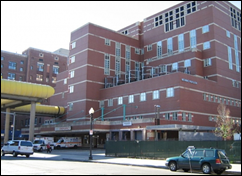
Boston Medical Center is also in financial straits, anticipating a $175 million loss in the fiscal year that starts October 1. The hospital laid off 250 people earlier this year and took other measures to cut costs by $40 million. It’s the state’s largest provider of care for the poor and also offers a food pantry for patients with special diets and legal aid. What happens when the nets collapse at safety net hospitals?
The local paper highlights EnovateIT and the niche it is building with its computer wall cabinets and moveable carts. The company, which last month announced plans to manufacture its own cart in the USA, employs 46 and has revenues of $46 million. I interviewed company president Ron Sgro last year and found him to be pretty fun (medical carts make for a pretty dry topic, but he was entertaining), plus I like their green approach to business.
Scotland becomes the first country in the UK to deliver e-prescribing services. More than 90% of all prescriptions are now submitted electronically using the national Acute Medical Service (eAMS).
Maine plans to go live on its statewide HIE later this month. HealthInfoNet will connect 15 hospitals, three health clinics, and the Maine CDC. Health information from more than 400,000 patients has already been loaded into the HealthInfoNet system, which is powered by 3M Health Information Systems.
GE announces a new partnership to integrate the Medicalis CDS-DI solution with its Centricity Imaging IT and EMR products.
The HIMSS Electronic Health Records Association (EHRA) sends a letter to the ONC recommending, among other things, that CCHIT be “the single certifying entity to avoid duplication of effort, unnecessary expense and confusion in the market.” Uproars from the anti-CCHIT folks to follow.
E-mail Inga.





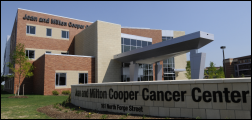













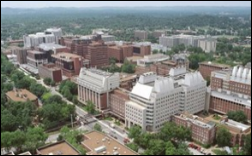




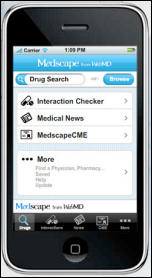


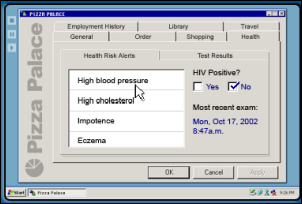

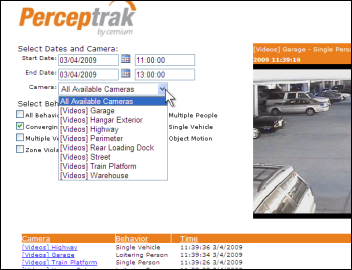
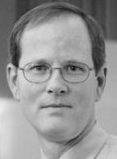
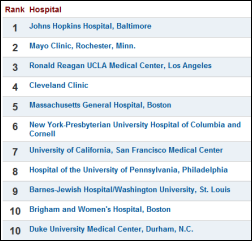
















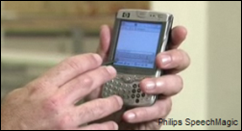




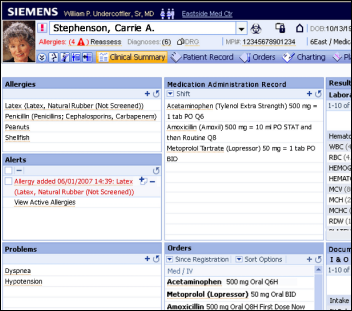

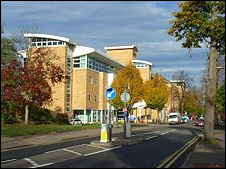

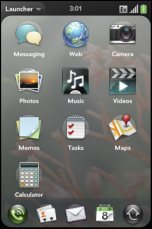












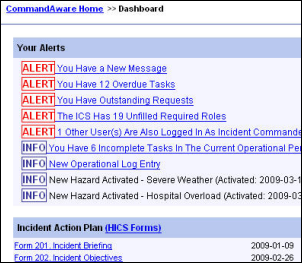




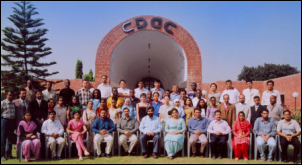

















































































The primary point of using the Cloud is using operating expenses vs limited capital ones and avoiding having to update…